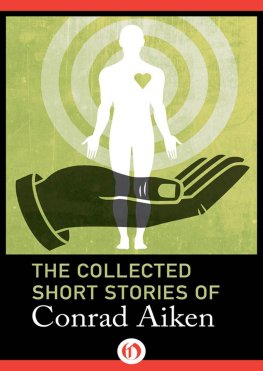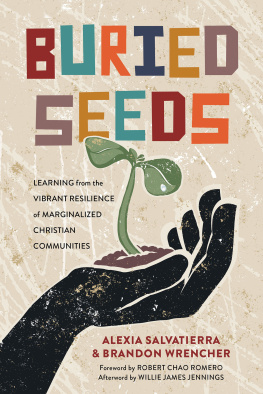


Published by The History Press
Charleston, SC
www.historypress.com
Copyright 2019 by Alexia Jones Helsley
All rights reserved
Cover images: Front: Mill employees with Graniteville Manufacturing Company output bundled for shipment, circa 1900. Courtesy Gregg-Graniteville Photographic Archives, Gregg-Graniteville Library, USC Aiken. Upper back: Steam locomotive, Graniteville, 1947, near Graniteville Manufacturing Company. Courtesy Gregg-Graniteville Photographic Archives, Gregg-Graniteville Library, USC Aiken. Lower back: Main Street (Laurens Street), Aiken, showing Hahns grocery, an unpaved street with streetcar tracks and electric lines. The PCK series, printed in Germany. Courtesy Allen Riddick Collection.
First published 2019
E-book edition 2019
ISBN 978.1.43966.626.5
Library of Congress Control Number: 2018960981
print edition ISBN 978.1.46714.149.9
Notice: The information in this book is true and complete to the best of our knowledge. It is offered without guarantee on the part of the author or The History Press. The author and The History Press disclaim all liability in connection with the use of this book.
All rights reserved. No part of this book may be reproduced or transmitted in any form whatsoever without prior written permission from the publisher except in the case of brief quotations embodied in critical articles and reviews.
To Chaseton Cole Paschal, Keiser Alexia Paschal, Justus Evelyn Paschal,
Evelyn Mae Helsley and Jacob Henry Helsley Jr.
Behold, children are a gift of the Lord.
Psalms 127:3a (NASB)
And to Deborah Tritt Harmon and Allen Riddick,
who made this dream possible.
CONTENTS
PREFACE
Aiken, South Carolina, is more than a place. It is a state of mindthe accumulated wisdom of centuries of living and working in a unique environment. It is also a beautiful place with woodlands and parks, charming vistas and blooming azaleas.
The history of Aiken is long in geologic and human time. The first human beings arrived more than eleven thousand years ago. They created stone tools and shaped utilitarian and decorative pottery from the rich koalin deposits along the rivers. They built communities, hunted and fished for food and left trails for later arrivals to follow.
The Mississippi mound builders also established chiefdoms and built mounds along the Savannah River. Some later settlers admired the strategic value and location of these mounds and the bluffs along the river and, like George Galphin, made them a base for economic development and protection.
The interplay of land, people and economic opportunity is critical for understanding the history of Aiken County, a unique place that lies between the Savannah and North Fork of the Edisto Rivers. As local poet Thomas H. Williams wrote:
This land of vineyard, valley and stream
The four square county of Aiken,
Where scenic beauty reigns supreme
ACKNOWLEDGEMENTS
Ones history is about connectionsthe associations, serendipitous encounters and unique personalities that are the stuff of life. This project is the result of many connections. In 2002, Dr. Val Lumans employed me to teach history at USC Aikenthe beginning of an exciting and wonderful adventure. Later in 2006, Jane Tuten, a person of great historical vision, employed me to process and arrange the archives of the University of South Carolina Aiken. This book, therefore, is a tribute to the many individuals who have made Aiken a wonderful place to live, work and visit.
The author thanks Professor Deborah Tritt Harmon, instruction/reference librarian and archivist of the Gregg-Graniteville Collection, Gregg-Graniteville Library, University of South Carolina Aiken. Professor Harmon shared her expertise and historical knowledge, as well as the riches of the Gregg-Graniteville Archives. In addition, the author thanks Allen Riddick, Aiken historian, for generously giving her access to his extraordinary collection of Aiken history and sharing his remarkable understanding of that history. Also, special thanks to Bill Benton and Precious Memories for his South Carolina postcard collection and to Curt DuVall, digital assistant, for his work digitizing the collections of the Gregg-Graniteville Library.
Special thanks to the hardworking staff of my former homethe South Carolina Department of Archives and Historyincluding Archives and Records Management director Steve Tuttle; Archives Accessions and Records Management supervisor Pat McCawley; Bryan Collars, Electronic Records and Digital Collections; and archivists Robert Murray, Kim McClure and Elaine Rohr for above-and-beyond research assistance. One can never have too many friends, so thanks, too, to Head of Collections and Curator of Manuscripts Graham Duncan and Visual Materials Archivist Beth Bilderback, South Caroliniana Library, University of South Carolina, as well as to my understanding husband, Terry, for his support and encouragement and, specifically, for proofreading and indexing this book.
PROLOGUE
Aiken is a diverse and beautiful place. Major interstate and state highways crisscross the county. Economically, the county profits from federal investment, a moderate climate, educated labor and good natural resources. It is a forward-looking area blessed with a long and fascinating history. Many are attracted to the award-winning county seat and the verdant hinterland.
But while much is good and much will be better, there are lost chapters in Aikens history. This book looks at several of thesehow they developed, how they contributed to modern Aiken and how we should celebrate, commemorate and remember them.
Modern Aiken stands on the shoulders of lost dreams and dreamers. Like Janus, the Roman god of beginnings and endings, one needs to look deep into the past in order to embrace fully the future.
Chapter 1
LOST FRONTIER
Savanna Town, Fort Moore and Windsor Township
Approximately 11,500 years ago, Native Americans entered the Southeast and began settling along the Savannah River. Initially, small mobile groups, hunter-gatherers, roamed the countryside. In time, with climate change, food supplies increased and populations grew. Some inhabitants became less mobile, enhanced their tool repertoire, developed pottery and expanded their food options. These early Aiken residents enjoyed a varied diet that included hunting, fishing and a variety of plants. For several millennia, they evolved new technologies, adapted to changing conditions, developed new social constructs and faced new challenges.
In 1540, the harbinger of the coming tsunami, Hernan de Soto, and a band of Spaniards crossed the Savannah River near modern Augusta. De Soto brought six hundred soldiers, a priest, a secretary, enslaved African and Native Americans, hogs, dogs and microbes. Seeking new sources of wealth, he landed in Florida and journeyed inland through Georgia, South Carolina and Western North Carolina and reached the Gulf Coast before his death and ignominious burial in the Mississippi River. De Sotos expedition found no gold or silver, but it did gather valuable information about the interior of the southeastern United States.













